A Complete Guide to Commercial Brewing Systems and Technology
Brewing has evolved from an artisanal craft into a sophisticated industry, requiring state-of-the-art technology and equipment to ensure quality, consistency, and efficiency. Whether you’re a startup brewery or an established brand scaling up production, understanding the essential components of commercial brewing systems and the technology behind them is crucial to success.
1. Brewhouse: The Heart of the Operation
The brewhouse is the beating heart of every brewery, where the brewing process begins and the foundation of the beer’s flavor is laid. This vital stage includes several key pieces of equipment, each playing a critical role in transforming raw ingredients into wort, which will later become beer. Understanding these components is essential for any brewer looking to produce high-quality beer with consistency and efficiency.
Mash Tun: The mash tun is the first stop in the brewing process, where crushed malt (also called grist) is mixed with hot water in a process known as mashing. The primary function of the mash tun is to activate enzymes within the malt that convert the starches into fermentable sugars, an essential step for determining the final alcohol content of the beer. The temperature, time, and water-to-grain ratio in the mash tun must be carefully controlled, as these factors significantly impact the flavor and body of the beer. A well-designed mash tun ensures an even conversion, maximizing sugar extraction while maintaining efficiency and consistency in each batch.
Lauter Tun: Once mashing is complete, the mixture of water and malt, called the mash, is transferred to the lauter tun. The lauter tun acts like a filter, separating the liquid wort from the grain husks. The clear wort drains out from the bottom of the tun, while the spent grains, which are often reused for animal feed or composting, are left behind. Advanced lauter tuns are equipped with rakes that gently stir the grain bed, improving the efficiency of extraction by helping the wort flow through evenly. Proper lautering is key to obtaining the highest yield of fermentable sugars, which directly influences the beer’s strength and flavor.
Boil Kettle: The next step in the brewhouse is the boil kettle, where the wort is brought to a rolling boil. Boiling serves multiple purposes: it sterilizes the wort, ensuring no unwanted microorganisms survive, and it drives off volatile compounds that can affect flavor. This is also where hops are added to the mix, contributing bitterness, aroma, and flavor, depending on the type and timing of their addition. The kettle is typically heated by steam or electricity, allowing precise temperature control, which is essential to achieving the desired hop utilization and flavor profile.
Whirlpool: After the boil is complete, the wort is transferred to a whirlpool vessel. This process separates solid particles, like hop residues and proteins, from the liquid wort. The whirlpool creates a natural filtering effect, drawing solids to the center of the vessel, where they settle and are later removed. This step ensures that the wort is as clean as possible before it moves into the next critical phase: fermentation. A clear wort helps prevent off-flavors in the finished beer, contributing to a crisp, clean taste.
Together, these brewhouse components form the core of the brewing process, laying the groundwork for the quality and character of the final product.
2. Fermentation Tanks: Turning Wort into Beer
Once the wort is cooled, it is transferred to fermentation tanks where the most critical transformation in the brewing process begins: fermentation. At this stage, yeast is introduced to the wort, and the sugars extracted from the malt during mashing are converted into alcohol and carbon dioxide. This process gives the beer its alcohol content and produces the carbonation essential to its texture and mouthfeel. In commercial breweries, large-scale fermenters are used to handle this crucial step efficiently and ensure consistency across large batches.
Conical Fermenters: One of the most common types of fermentation vessels used in modern breweries is the conical fermenter. These tanks are characterized by their distinctive cone-shaped bottom, which serves several important purposes. As the yeast ferments the sugars in the wort, it creates byproducts like dead yeast cells and other sediments, often referred to as trub. In conical fermenters, this trub naturally settles at the base of the cone, allowing brewers to easily separate it from the beer. This design enables more efficient yeast harvesting and better clarification of the beer, reducing the need for extensive filtration later in the process. Additionally, the conical shape makes it easier to remove and reuse healthy yeast, improving cost-efficiency and fermentation control.
Temperature Control Systems: Fermentation is highly sensitive to temperature, and maintaining the right conditions is vital for producing consistent, high-quality beer. Each type of yeast strain has an optimal temperature range where it ferments most effectively and produces the desired flavors. If the temperature is too high, the yeast may produce unwanted esters and off-flavors; if too low, fermentation could slow or even stop altogether. To avoid these issues, commercial fermentation tanks are equipped with temperature control systems. These typically consist of cooling jackets wrapped around the tank, through which chilled liquids or glycol are circulated to keep the temperature stable.
Advanced Control Systems: In larger breweries, fermentation tanks are often fitted with advanced control systems that automate the monitoring and regulation of temperature, pressure, and other critical variables. These systems continuously track the fermentation process in real-time, ensuring the conditions remain within the desired range and adjusting them as needed. Automated systems reduce the margin for error and help maintain consistent quality across batches, essential in commercial brewing, where uniformity is a key concern.
By using advanced fermentation tanks and technologies, commercial brewers can closely manage the fermentation process, ensuring a reliable transformation of wort into beer and producing brews with consistent flavors, aromas, and textures. This stage is where the beer's final character is shaped, and careful management is critical for achieving the desired outcome.
3. Filtration and Clarification Equipment
Before beer is packaged, it typically undergoes a crucial step: filtration. This process helps remove any remaining yeast, hop particles, protein sediments, and other unwanted solids from the beer. Proper filtration is essential for creating a clean, polished product, especially in commercial brewing, where clarity, consistency, and shelf life are key concerns. The level and type of filtration depend on the specific style of beer being brewed. Some styles, such as hazy IPAs, require minimal filtration to maintain their cloudy appearance, while others, like lagers, benefit from a clear and bright finish.
Plate and Frame Filters: One of the most commonly used filtration systems in commercial breweries is the plate and frame filter. This system consists of a series of plates arranged in a frame, between which filter media are placed. The beer is forced through these layers, which trap unwanted particles, such as remaining yeast cells and protein sediment, while allowing the filtered liquid to pass through. Plate and frame filters are highly efficient for large-scale operations, enabling breweries to quickly process significant volumes of beer. They are especially useful when a high degree of clarity is required, as they can remove even very fine particles from the beer. These systems are customizable based on the desired level of filtration, offering flexibility for different beer styles.
Centrifuges: In addition to traditional filtration, some breweries use centrifuges to clarify beer without losing much of the product. A centrifuge operates by spinning the beer at high speeds, creating centrifugal force that separates solids from liquids. This process works quickly and effectively, producing clear beer while retaining more of the liquid than traditional filters, which may absorb some of the beer. Centrifuges are particularly useful in large breweries, where minimizing waste and maximizing yield is a priority. Another advantage of using centrifuges is that they can handle beers with more delicate flavors, where conventional filtration might strip away desirable elements. This makes centrifuges an excellent choice for preserving the beer’s full profile while ensuring clarity.
Bright Tanks: After filtration, the beer is transferred to bright tanks for conditioning and carbonation. These tanks play a critical role in the final stages of beer production, as they allow the beer to mature, develop its final flavor profile, and stabilize before packaging. Carbonation is either naturally developed or injected with CO2 in bright tanks to give the beer its signature fizz. This stage also allows the beer to settle and clarify further, ensuring that it is at its best before being bottled, canned, or kegged. Bright tanks are designed to hold the beer in a stable environment where temperature and pressure can be carefully controlled, ensuring that the beer is perfectly conditioned when it reaches the consumer.
By carefully managing filtration and conditioning, breweries can produce clear, consistent beer that meets their desired quality standards, preparing it for the final step of packaging and distribution.
4. Packaging Systems: From Brewery to Consumer
Packaging is the final and one of the most critical stages in the brewing process, as it directly affects the beer's freshness, stability, and overall quality. This stage requires careful attention to detail, as improper packaging can compromise months of hard work. The packaging method chosen depends on the brewery’s scale, distribution needs, and target markets. Different packaging formats cater to various consumption settings, whether for individual retail sales or larger bulk deliveries to restaurants and bars.
Bottling Lines: Bottling has been a traditional choice for beer packaging for decades, especially for high-volume breweries. Automated bottling systems have significantly streamlined this process, allowing for the filling, capping, and labeling of hundreds to thousands of bottles per hour. These machines can handle everything from small glass bottles to larger, specialized formats for limited releases or premium products. Bottling lines are essential for breweries with widespread distribution, as they provide consistent packaging at high speed, ensuring that the beer remains fresh and properly sealed. Modern bottling systems are designed to minimize oxygen exposure, which can lead to premature staling, and ensure that each bottle is capped securely for maximum shelf life.
Canning Lines: In recent years, cans have become increasingly popular in the craft brewing industry, favored for their convenience, durability, and environmental benefits. Cans are lightweight, highly recyclable, and provide superior protection against light and oxygen, both of which can degrade beer quality over time. Light exposure can cause a "skunky" off-flavor in beer, making cans a great choice for preserving freshness. Commercial canning lines are incredibly efficient, capable of filling and sealing large quantities of beer in a short period. These systems are fully automated, reducing human error and ensuring a consistent product. Additionally, cans are space-efficient for storage and transportation, further enhancing their appeal for breweries aiming to scale up production.
Kegging Systems: Kegs are the preferred packaging method for bars, restaurants, and venues that serve beer on tap. They offer a cost-effective and efficient way to distribute large quantities of beer, ensuring that it stays fresh for longer periods once tapped. Kegging systems are designed to clean, fill, and seal kegs, ensuring that they are sanitized and free of contaminants before the beer is added. This is a critical step, as any residual bacteria or yeast in the kegs could spoil the beer. Kegging systems are highly automated and capable of handling different sizes of kegs, from smaller options for local delivery to large kegs for major distributors. Kegs provide an excellent packaging solution for brewers who distribute to restaurants or taprooms, offering the advantage of bulk distribution while maintaining the beer’s freshness and quality.
Each packaging method—whether bottles, cans, or kegs—plays a crucial role in maintaining the integrity of the beer throughout its journey from the brewery to the consumer. With the right packaging systems, breweries can ensure their beer reaches customers in optimal condition, retaining its intended flavors, aromas, and carbonation.
5. Automation and Control Systems
In modern brewing, technology has become a cornerstone for ensuring consistency, efficiency, and scalability. Automation enables brewers to control every aspect of the brewing process with precision, allowing for greater quality control and the ability to produce large quantities of beer without compromising on taste or texture. Advanced brewing systems integrate software, programmable logic controllers (PLCs), and Internet of Things (IoT) technology to create a more streamlined, reliable, and data-driven production environment.
Brewing Software: Many commercial breweries rely on specialized brewing software to manage the entire brewing cycle, from recipe development to fermentation monitoring. These programs help track key performance indicators (KPIs), such as temperature, pH levels, and yeast activity, providing real-time data throughout the process. This real-time insight allows brewers to make on-the-spot adjustments to fine-tune their processes and ensure consistency across batches. Brewing software also manages inventory, ingredient sourcing, and scheduling, ensuring that the brewing process runs smoothly and efficiently. By integrating brewing data with other operational aspects, such as sales forecasts and distribution, brewers can optimize production to meet market demand while reducing waste and downtime.
PLC (Programmable Logic Controller) Systems: Programmable Logic Controllers (PLCs) are at the heart of modern brewing automation. These systems control the operation of key equipment throughout the brewery, including mash tuns, lauter tuns, boil kettles, and fermentation tanks. PLCs can be programmed to perform a wide range of functions, from monitoring temperatures and pH levels to adjusting water flow rates and controlling the timing of different brewing stages. One of the major advantages of PLC systems is their ability to automate repetitive tasks, reducing human error and improving efficiency. For example, a PLC can ensure that temperatures during the mashing process are maintained within precise ranges, or that the wort is boiled for the exact amount of time needed for optimal hop extraction. This high level of control significantly enhances both productivity and product quality, enabling brewers to maintain a high degree of consistency across large-scale production.
IoT Integration: The Internet of Things (IoT) has brought new possibilities to the brewing industry by enabling connected systems that can be monitored and managed remotely. IoT sensors and devices can be installed throughout the brewery to track equipment performance, temperature, pressure, and other critical variables in real-time. For instance, fermentation tanks can be equipped with IoT sensors to continuously monitor yeast activity and temperature, allowing brewers to intervene promptly if something goes awry. This remote monitoring reduces the need for constant on-site supervision, giving brewers the flexibility to oversee multiple production lines or manage processes off-site. Furthermore, IoT integration can predict maintenance needs, identifying potential equipment failures before they occur and reducing costly downtime. This predictive maintenance capability not only enhances operational efficiency but also ensures that the brewery can meet production targets without interruption.
Together, these technologies form the backbone of modern brewing, allowing commercial breweries to scale their operations without sacrificing quality. By incorporating brewing software, PLCs, and IoT systems, brewers gain unparalleled control over every stage of the process, from mash-in to packaging, helping them produce consistent, high-quality beer with improved efficiency and reduced waste. These technological advancements are crucial for breweries looking to expand or enhance their production capabilities in an increasingly competitive market.
6. Cleaning and Maintenance: Keeping Equipment in Top Shape
Proper cleaning and maintenance are essential for ensuring the longevity of brewing equipment and the quality of the beer produced. In a commercial brewery, where precision and hygiene are crucial, keeping equipment in top condition not only prevents contamination but also extends the life of expensive machinery. Commercial brewing systems are often equipped with built-in CIP (Clean-In-Place) systems, allowing for thorough cleaning of the internal surfaces of tanks, pipes, and other equipment without the need for disassembly. In addition to automated cleaning, regular maintenance checks are vital to keeping the brewery running smoothly and minimizing downtime caused by mechanical failures.
CIP Systems: Clean-In-Place (CIP) systems are a standard feature in most commercial brewing setups, designed to streamline the cleaning process and maintain a high level of sanitation. These systems typically use a combination of detergents, water, and sometimes steam to clean the interior surfaces of brewing tanks, fermenters, piping, and other critical equipment. The cleaning process is fully automated, allowing brewers to schedule and execute cleanings between brewing cycles without having to take apart equipment, which saves both time and labor. CIP systems are designed to remove residue such as proteins, yeast, and other organic materials that can build up during the brewing process, as well as to eliminate microbial contamination that could spoil the beer. The use of hot water or steam also ensures that equipment is sanitized, creating a hygienic brewing environment that is critical for ensuring consistent, high-quality beer.
CIP systems are programmable, meaning they can be customized to meet the specific needs of different stages in the brewing process. For example, cleaning the mash tun, which tends to accumulate grain residue, might require a different cleaning cycle than the fermentation tanks, where yeast and sugars create a different type of residue. Effective CIP systems reduce the risk of cross-contamination and ensure that each batch of beer is brewed in a clean environment, meeting the stringent quality and safety standards required in commercial brewing.
Regular Maintenance Checks: While cleaning ensures a sanitary brewing environment, regular maintenance checks are essential for keeping the brewing equipment in optimal working condition. Preventative maintenance schedules are implemented to identify and address potential issues before they lead to costly breakdowns or inefficiencies. Key components like seals, valves, pumps, and heating elements undergo regular inspection. Checking these parts for wear and tear ensures that they continue to function correctly and prevents leakage, improper sealing, or temperature inconsistencies, which could compromise the brewing process.
Routine inspections may also involve testing the calibration of various sensors and control systems, ensuring that temperature, pressure, and other critical variables are measured accurately. Pump systems, which play a vital role in moving liquids between different stages of the brewing process, need regular servicing to prevent blockages or malfunctions. Replacing worn-out parts, lubricating moving components, and cleaning filters are all part of a good maintenance schedule, helping breweries avoid unplanned downtime and extending the lifespan of their equipment.
By combining automated CIP systems with a proactive maintenance routine, breweries can ensure that their equipment runs efficiently and continues to produce beer at a high standard. This approach not only maintains product quality but also reduces operational costs over time, allowing breweries to focus on crafting great beer rather than dealing with preventable equipment issues.
7. Environmental and Energy Considerations
Commercial brewing systems are increasingly being designed with sustainability at the forefront, reflecting both environmental responsibility and cost-efficiency. As awareness of climate change and resource depletion grows, many breweries are adopting technologies that reduce water and energy consumption, lower carbon footprints, and promote more environmentally friendly brewing practices. These innovations are not only vital for preserving the environment but also help breweries streamline their operations and reduce costs over time. From water recirculation systems to energy-efficient technologies, breweries are finding new ways to make their operations greener without sacrificing productivity or quality.
Water Recirculation Systems: Brewing is a highly water-intensive process, with many breweries using multiple gallons of water for every gallon of beer produced. To address this, many commercial brewing systems now incorporate water recirculation and reuse systems, which are designed to reduce waste and make water usage more efficient. These systems collect and treat water used in various stages of the brewing process—such as cooling, cleaning, and rinsing—so that it can be reused instead of being discarded. For instance, the water used to cool wort can be recirculated back into the system to be used again in the brewing or cleaning process, significantly reducing the overall water consumption of the brewery. By implementing water-saving technologies, breweries can conserve this vital resource and lower their operational costs, all while contributing to a more sustainable brewing process.
Energy Efficiency: Energy consumption is another major consideration for modern breweries aiming to become more sustainable. Traditional brewing processes require large amounts of energy, particularly for heating, boiling, cooling, and refrigeration. To minimize this impact, many breweries are now turning to equipment that uses renewable energy sources or incorporates energy-saving technologies. One example is the use of heat recovery systems, which capture and repurpose the energy generated during brewing. For instance, heat exchangers can be used to capture heat from the boiling wort and transfer it to pre-heat water for the next brewing cycle. This reduces the amount of energy needed to heat water from scratch, creating a more efficient process.
In addition, some breweries are integrating solar panels or wind energy to power their operations, reducing their reliance on fossil fuels. Others are installing energy-efficient refrigeration units, which use less power to maintain the precise temperatures required for fermentation and storage. By optimizing energy use, breweries can significantly reduce their carbon footprint while also lowering energy costs, making sustainable practices a win-win for both the environment and the business.
Waste Management and Byproduct Reuse: Beyond water and energy efficiency, breweries are also finding creative ways to reduce waste and repurpose byproducts. Spent grains, for example, are often sent to local farms for use as animal feed, composted, or even used in other industries like baking or biofuel production. Some breweries are implementing anaerobic digesters to convert organic waste into biogas, which can be used to generate energy for the brewing process.
By adopting these sustainable practices and technologies, commercial breweries are reducing their environmental impact while also improving their bottom line. As consumers increasingly favor eco-conscious brands, sustainability is becoming a critical factor for success in the brewing industry, driving the shift towards greener brewing systems and practices.
Conclusion
Commercial brewing equipment is the backbone of a brewery’s operation. From brewhouses and fermentation tanks to advanced packaging lines and automation systems, the right tools can make or break the brewing process. As the industry continues to grow and innovate, technology is playing an increasingly vital role in enhancing both efficiency and quality. Investing in the right brewing systems and staying ahead with technological advancements can ensure a brewery’s long-term success, allowing brewers to focus on what they do best: creating great beer.
Products
- Beer brewery equipment
- Craft brewing equipment
- Home brewing equipment
- Microbrewery equipment
- Commercial brewing equipment
- Industrial brewery equipment
- Pilot brewing system
- Brewhouse & Mash system
- Fermentation tank
- Bright / Brite tank
- CIP system
- Beer filling machine
- Pasteurizer
- Hop gun
- Yeast propagation equipment
- Beer concentration equipment
- Carlsberg flask
- Reverse osmosis water filtration systems
- Mobile water treatment systems
- Water Purification Equipment
- WFI equipment
- Purified water tank
- CIP system
- Multi effect water distiller
- Pure steam generator
- WFI tank
- Solution preparation tank
- Tube heat exchanger
- Storage and distribution system
- Liquid preparation system
- Demineralized water system
- Vapour compressor
News & Exhibitions
- Why Beer Concentration Matters: Unpacking the Standard ABV Range
- Why Every Craft Brewer Needs a Pilot Beer Brewing System
- Top 5 Benefits of Using a Pilot Beer Brewing System for Small Breweries
- Setting Up a Microbrewery? Why Turnkey Equipment Might Be Right for You
- How Nano Brewery Equipment is Changing Experimental Brewing: A Deep Dive into Small-Scale Innovation
- Essential Craft Beer Equipment for Starting Your Brewery
- Integrating Smart Equipment into Your Microbrewery
- From Grain to Glass: Building the Perfect Complete Brewing System for Your Home
TAGS
- turkey brewery equipment
- small beer brewery equipment,mini beer brewery equ
- sovereign stainless steel fermenter
- brewing equipment manufacturers uk,home brewing eq
- home brewing distillation equipment
- craft brewery equipment for sale, craft beer equip
- beer brewing equipment
- complete brewery for sale
- Nano brewery equipment, brewing systems manufactur
- 15 gallon jacketed fermenter
- automatically brew equipment,50L Brewing equipment
- dry hops addition
- hops addition gun
- hop additive gun
- mixing tank manufacturers
- pilot brewing system
- Craft beer making equipment for Malaysia
- CIP system
- Microbrewery machine
- professional Cleaning in place equipment
Newest Products
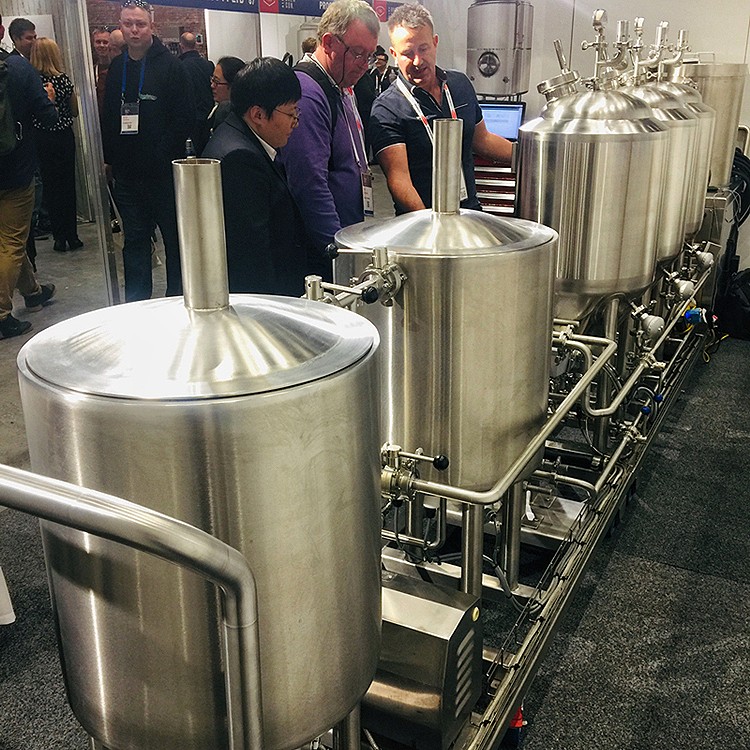
Marketplace home & living lifestyle home brewing d...
The home brewing and distilling market has grown in popularity in recent years, ...
More >>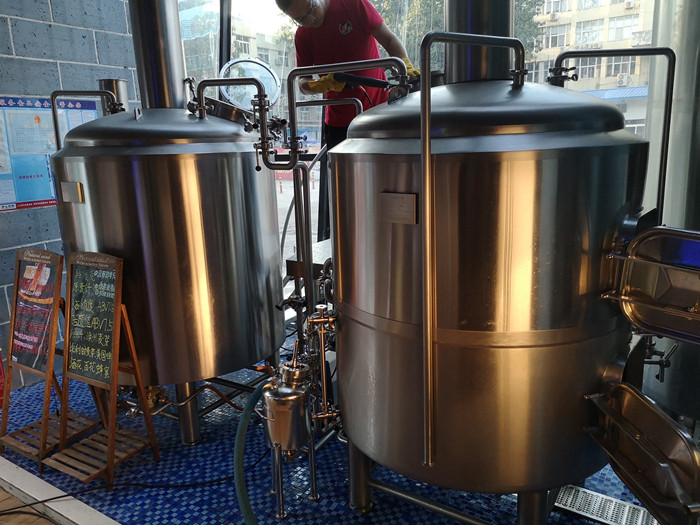
Beer brewhouse and fermentation tanks microbrewery
WEMAC-Main product categories:
Craft Beer equipment,Cider making machine,Beer b...
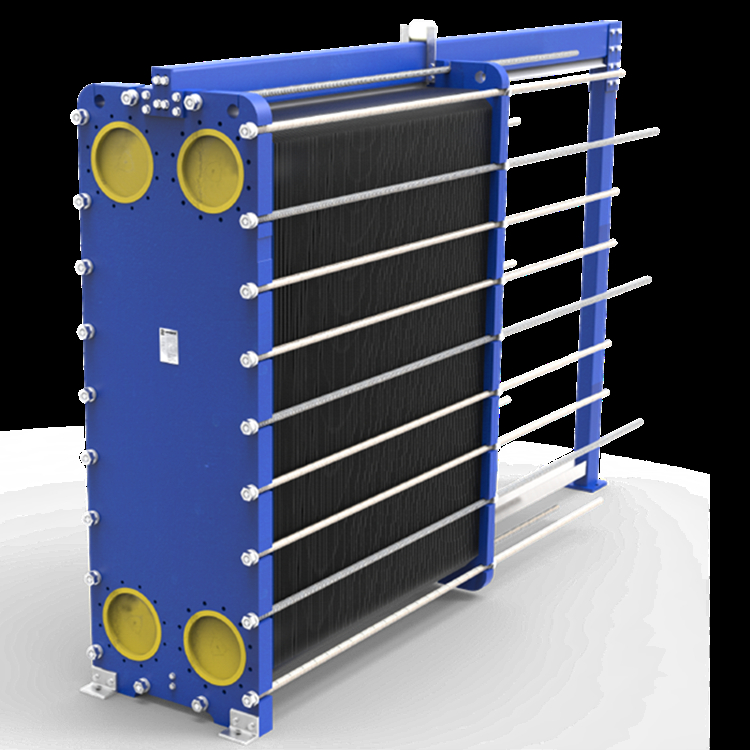
Best plate heat exchanger for beer brewery
The WEMAC plate heat exchanger (PHE) series is extensive, including multiple typ...
More >>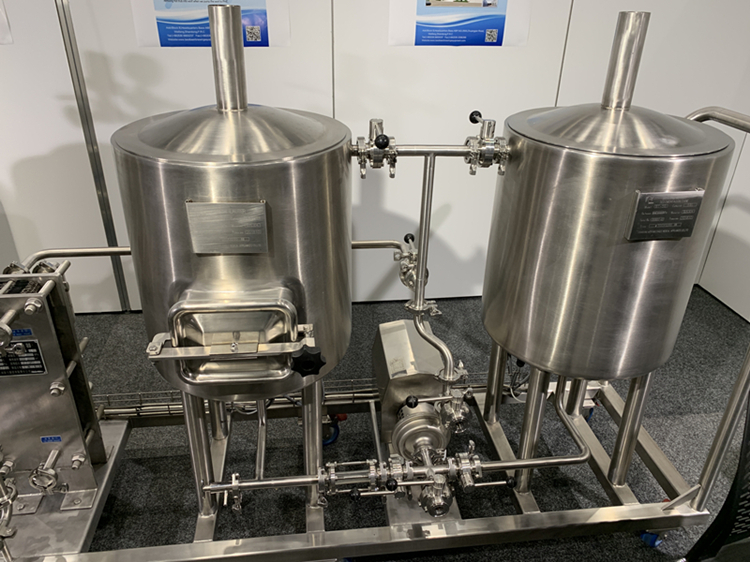
Home beer brew kits brewery equipment
This skid home brewing system is designed for craft brewing amateurs who has bee...
More >>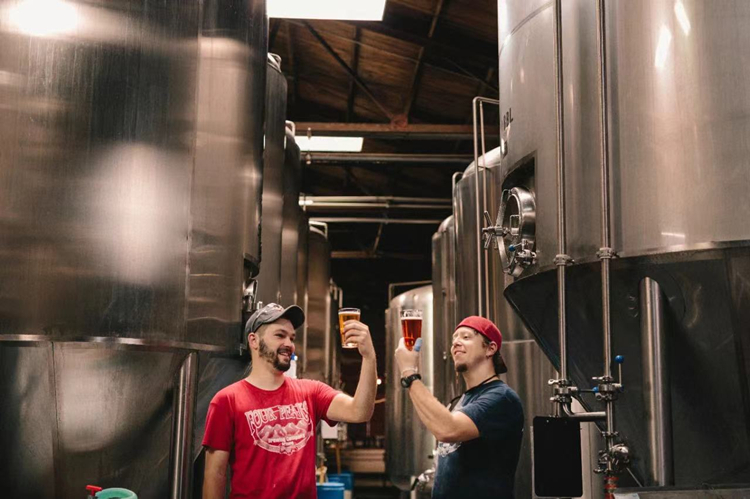
Top quality fermenter and beer bright tank
Brite or Bright Beer Tanks are also known as Beer Conditioning Tanks or Beer Ser...
More >>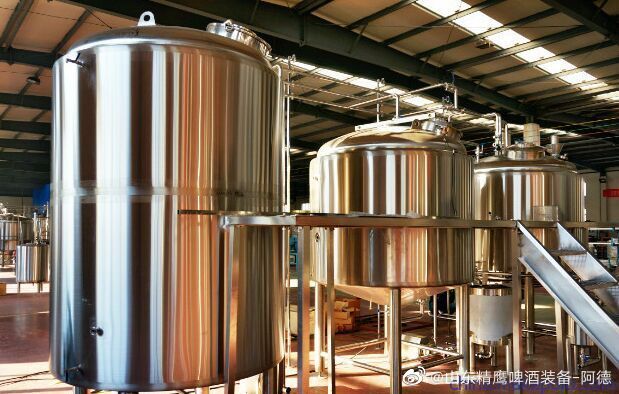
Pro two vessels 5BBL craft brewery in Michigan
Professional beer brewhouse sale well in Michigan state,turnkey brewery services...
More >>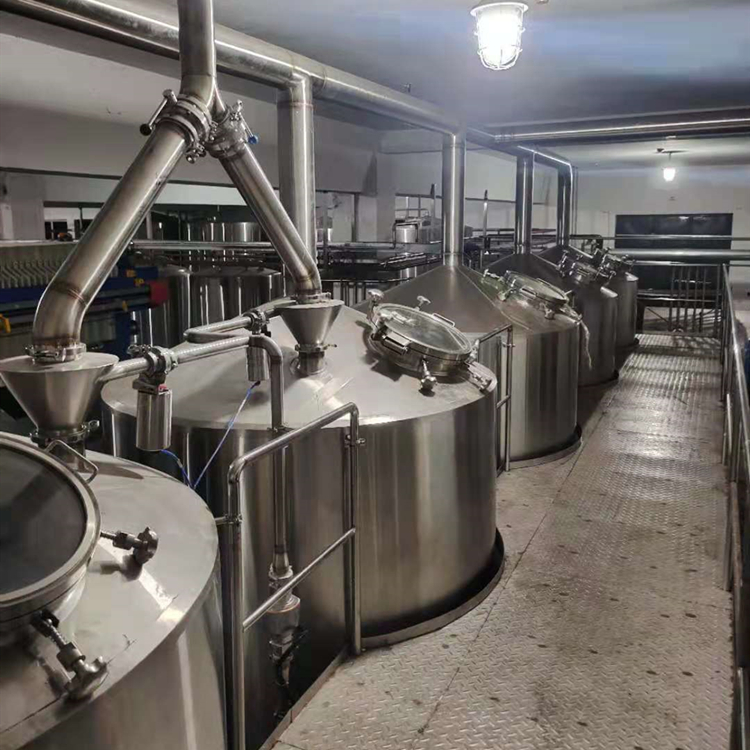
4000L Commercial Beer Brewery Equipment
4000L four vessels craft beer brewing brewery system,gas steam heating,with a be...
More >>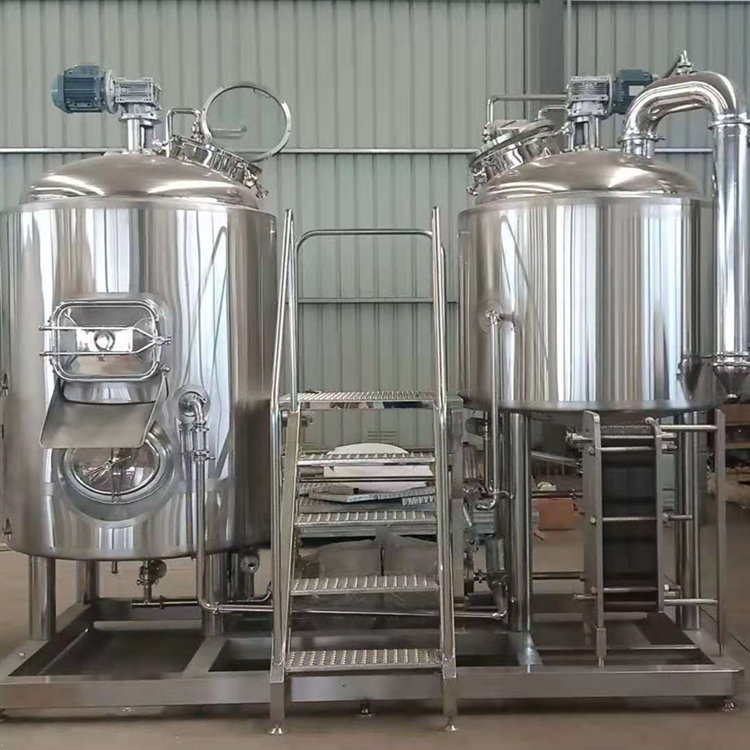
500L Top quality craft beer brewery equipment
Double vessels craft beer brewing brewhouse for sale,mash/kettle tun + lauter/wh...
More >>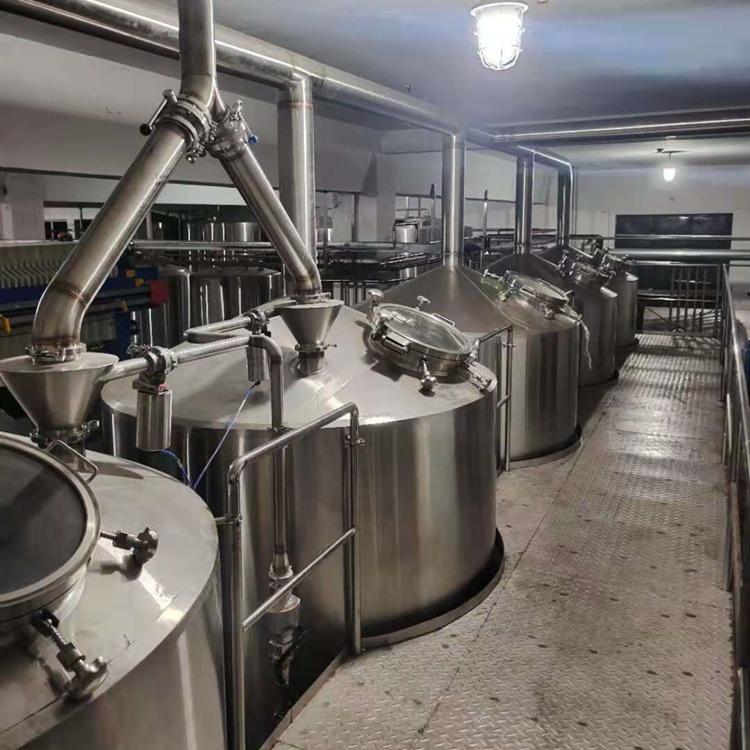
4000L Five vessels turnkey beer brewery
Five vessels craft beer brewhouse system suppliers,Double mash tun+double kettle...
More >>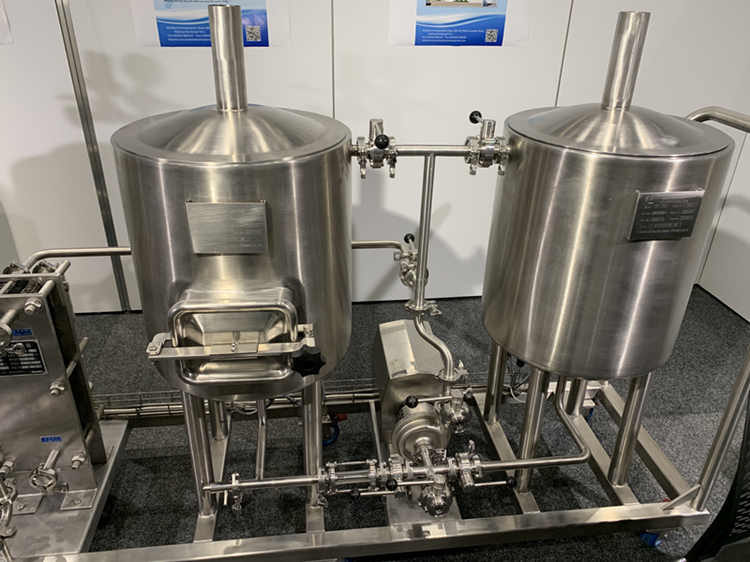
Best 50L home beer microbrewery equipment
Two vessels combination,mash/lauter tun+kettle/whirlpool tun brewery.electric co...
More >>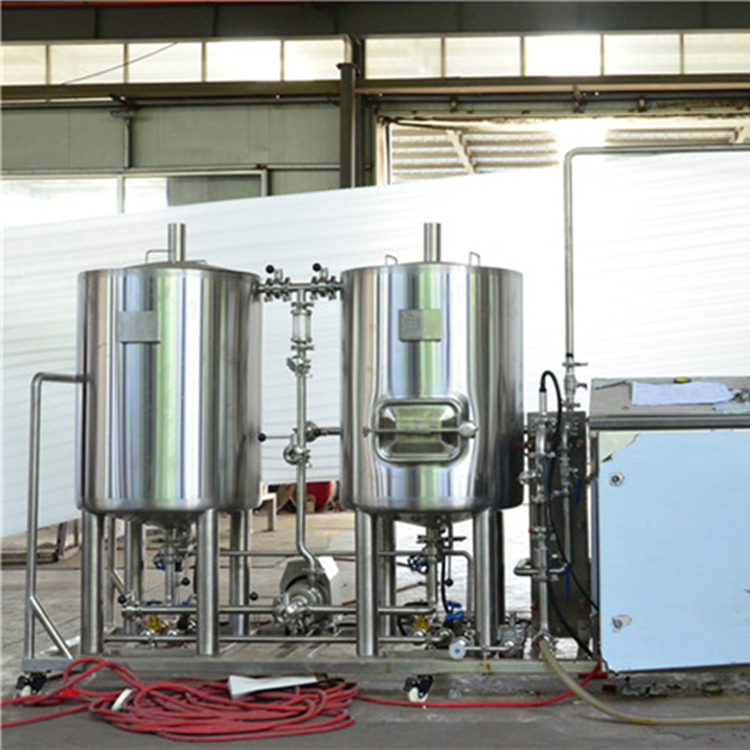
100L beer brewing home microbrewery
Mash/lauter/kettle tun+whirlpool tun,electric coil heating,two stages cooling,pl...
More >>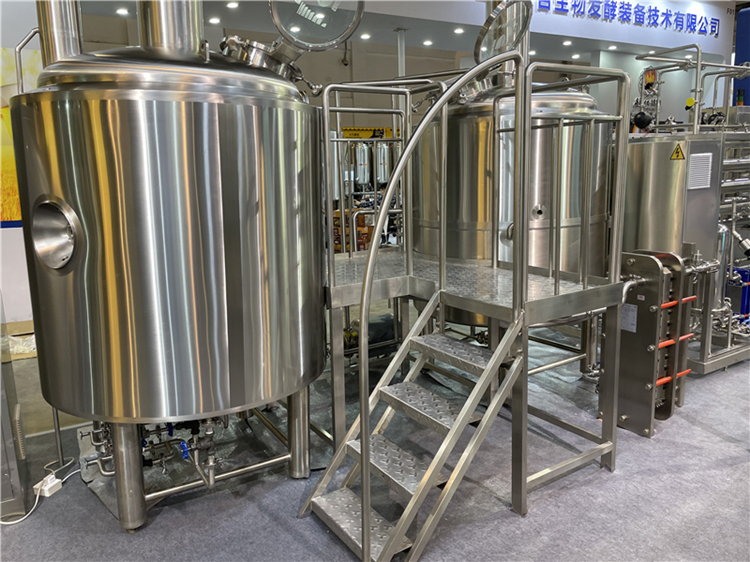
Build me a 1500L beer brewery
mini beer brewery machine from 50L,which is suitable to use in home and family b...
More >>